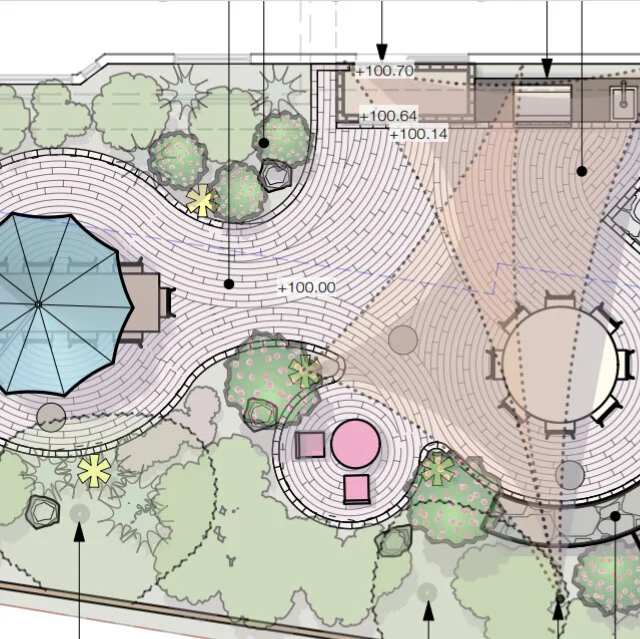Our clients must trust us, often before we’ve entirely earned it. We know we’re worthy of that trust; but how do they? It begins with our word.
Read MoreWhat are the differences between an unlicensed landscape designer and a licensed landscape architect, and how do you choose?
Read MoreIs that project better suited to a landscape designer or a design-build contractor? And what’s the difference, anyhow?
Read MoreThis is the sixth and last in a series of posts describing the phases of our work: Installation Support. The purpose of the Installation Support phase is to answer questions, make adjustments, and provide any other guidance to ensure the new landscape lives up to our vision.
Read MoreThis is the fifth in a series of posts describing the phases of our work: Construction Documentation. The purpose of the Construction Documentation phase is to provide a landscape installer with all the information and direction needed to accurately bid and build the landscape design.
Read MoreThis is the fourth in a series of posts describing the phases of our work: Design Development. The purpose of the Design Development phase is to explore and refine our preliminary ideas, ensuring they are feasible both functionally and financially.
Read MoreThis is the third in a series of posts describing the phases of our work: Preliminary Design. The purpose of the Preliminary Design phase is to assign forms and finishes to the functions that were defined in the Schematic Design phase.
Read MoreThis is the second in a series of posts describing the phases of our work: Schematic Design. Schematic Design is the dreamer of the landscape architect’s process, the idealist. Its purpose is to find the optimal relationships among the functions and rooms of the landscape. It’s a treasure hunt, a jigsaw puzzle — and also a creative sprint.
Read MoreA great landscape design doesn’t just happen: it’s the result of a process. This is the first in a series of posts describing the phases of our work: the Pre-Design phase. And while Pre-Design is the least creative phase of our work, it’s surprisingly involved, and arguably the most important.
Read More








